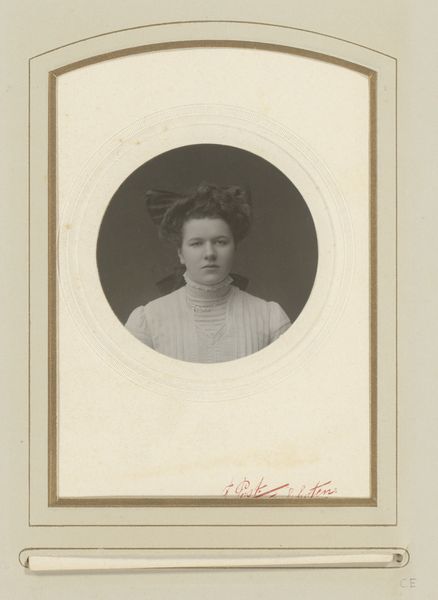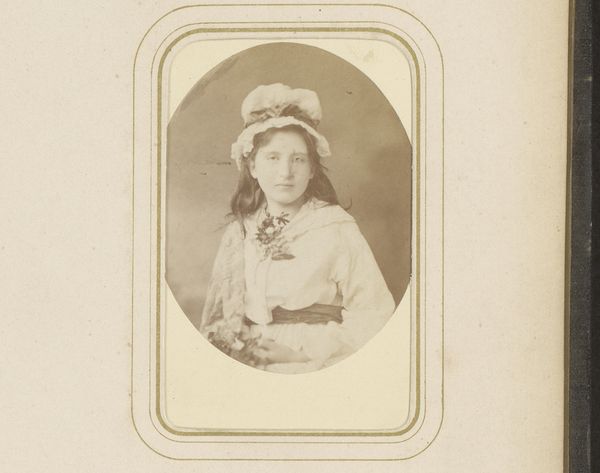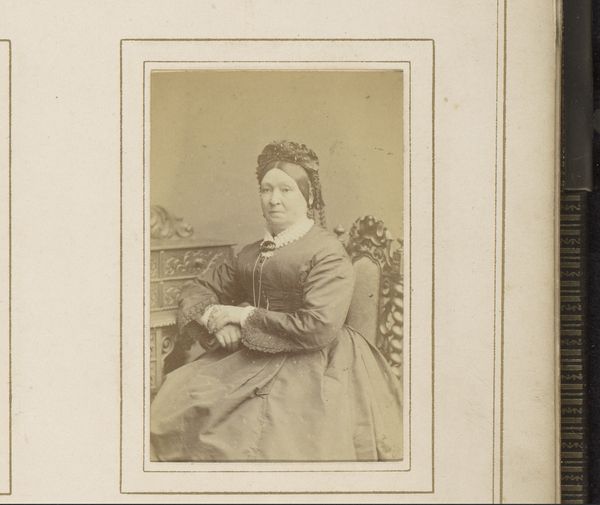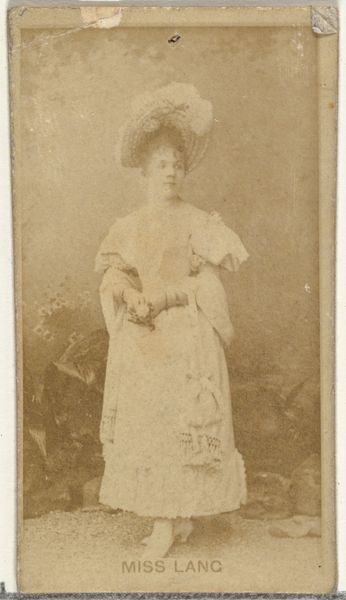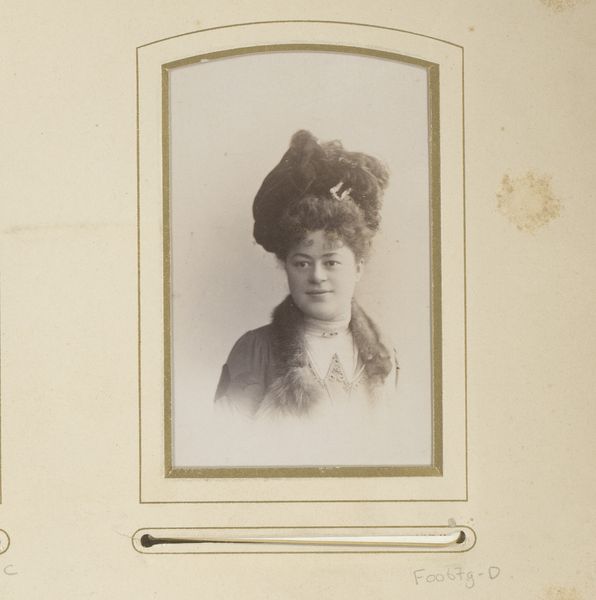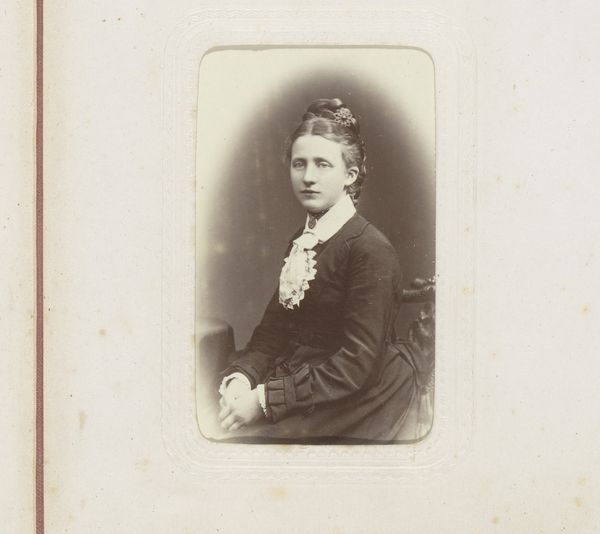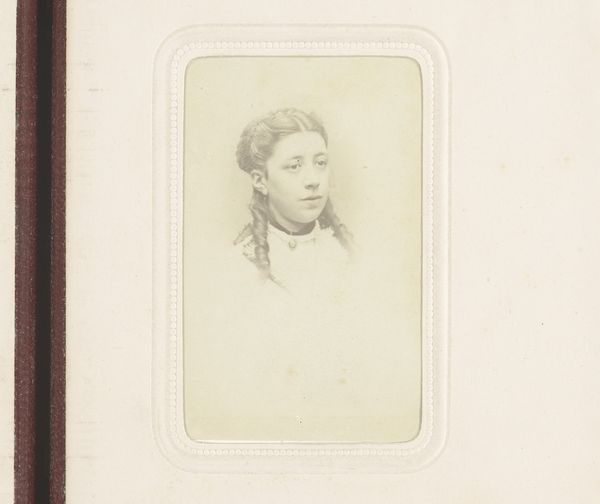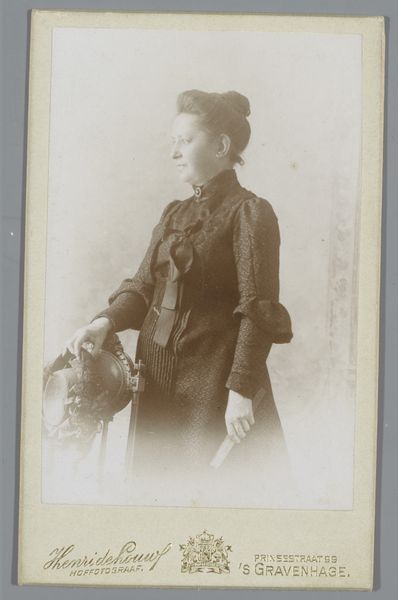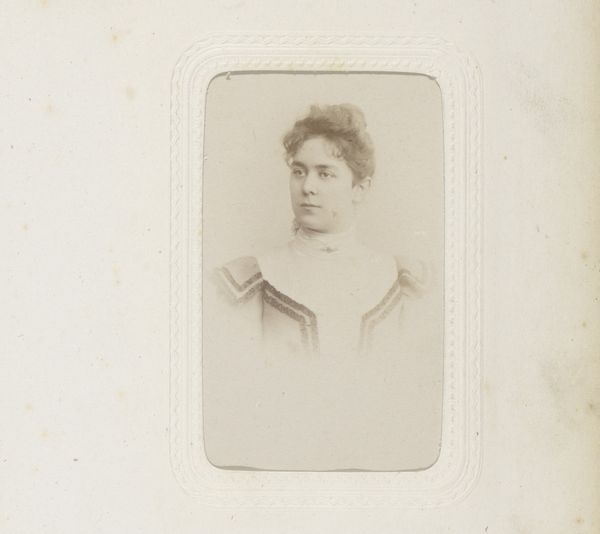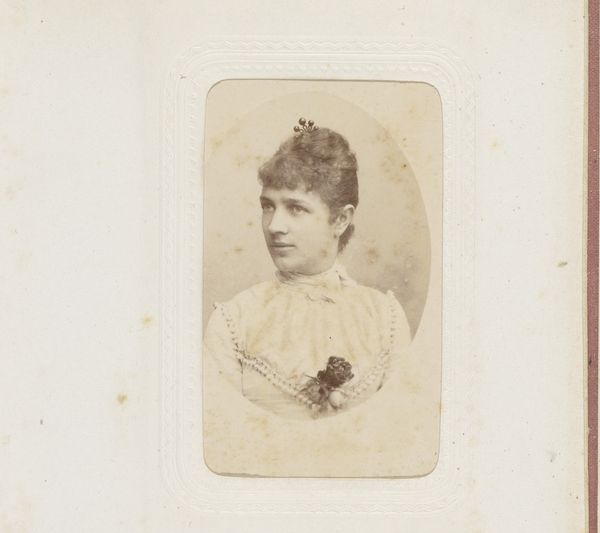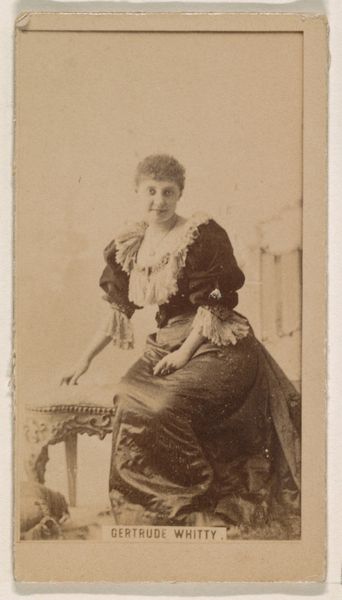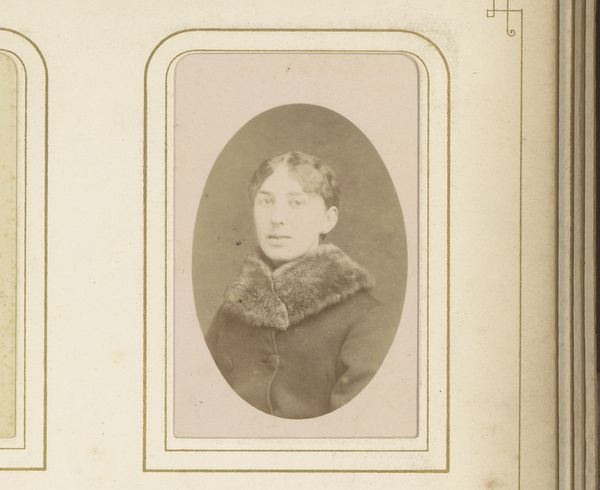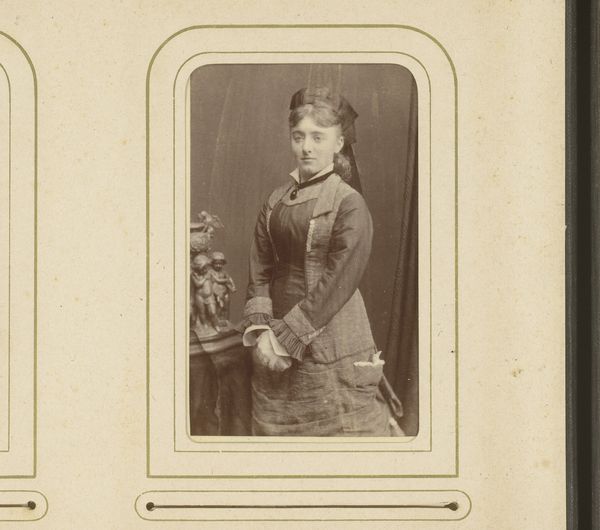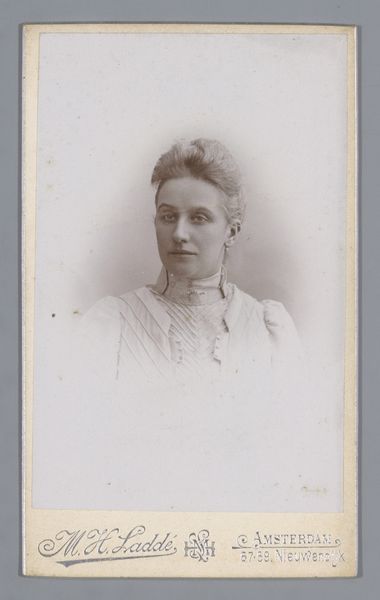
Portret van een vrouw, leunend op een sokkel waarover een doek gedrapeerd is 1865 - 1900
0:00
0:00
photography, gelatin-silver-print
#
portrait
#
pictorialism
#
photography
#
historical photography
#
gelatin-silver-print
#
realism
Dimensions: height 90 mm, width 55 mm
Copyright: Rijks Museum: Open Domain
Curator: This gelatin silver print, titled "Portret van een vrouw, leunend op een sokkel waarover een doek gedrapeerd is," by Ernest Ladrey, offers us a glimpse into the late 19th century. Editor: There’s a formality here, but also a kind of intimate stillness. The muted tones give it a dreamlike quality; the woman seems poised between worlds. Curator: These early photographic portraits, circulating widely from the 1860s onwards, became incredibly important cultural documents. The rise of photography democratized portraiture, giving ordinary people the opportunity to represent themselves. Editor: The draped cloth—is it velvet?—suggests a certain status, an attempt to link her image to those of the aristocracy. But it's the woman’s steady gaze that anchors me. There’s little idealization; she meets your eye directly. Her pose speaks of confident self-presentation, a deliberate construction of identity. Curator: Exactly. The very act of commissioning a photograph was a statement. Although the sitter is unidentified, she’s clearly taking an active part in constructing the image, engaging with societal norms regarding female representation. Think of how new fashion trends rapidly gained traction through photographs; and portraits such as these played their part in communicating social position, wealth, and gender roles to a larger viewing public. Editor: The simplicity is quite striking. It's interesting how clothing is coded with messages about societal standing; here, it adds layers of interpretation about class and respectability, or perhaps subversion. It is the lack of obvious, traditional symbols of status, combined with that intense gaze, which to me speaks of individual strength and quiet resistance to be defined. Curator: It's also important to note the proliferation of photographic studios throughout the 19th century and the subsequent marketing tactics designed to increase clientele. People from across social stratospheres began visiting photographers for diverse life events; graduation portraits became quite common around this period, and indeed, contributed heavily towards building modern concepts of personhood, memory, and history. Editor: Seeing it within that context of cultural transformation brings a much more powerful dimension into the picture for me. Curator: Yes, hopefully this sheds light on how social histories have intersected in creating this deceptively straightforward portrait. Editor: Indeed, I walk away now seeing not just a portrait, but a social record.
Comments
No comments
Be the first to comment and join the conversation on the ultimate creative platform.
